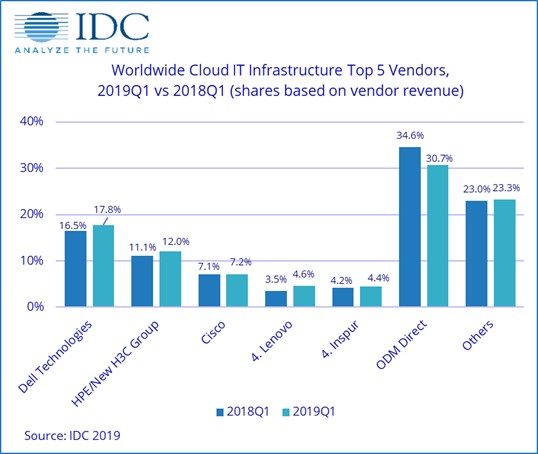The cloud is utilised across the globe and yet still misunderstood by many. It’s capable of ensuring greater security across organisations both small and large, and yet can still strike a sense of urgency and confusion into many business owners.
With the substantial growth of cloud only set to continue for the foreseeable future, it’s time to clear the air around this trend.
It’s time to clear the air around this trend.
A sector set for massive growth
According to the International Data Corporation (IDC) Worldwide Quarterly Cloud IT Infrastructure Tracker, vendor revenue from sales of IT infrastructure products (server, enterprise storage, and Ethernet switch) for cloud environments, including public and private cloud, grew 11.4% year over year in the first quarter of 2019 (1Q19), reaching $14.5 billion. It’s certainly no small increase, and shows many businesses are now turning to cloud-based systems.
“As the overall IT infrastructure goes through a period of slowdown after an outstanding 2018, the important trends might look somewhat distorted in the short term,” said Natalya Yezhkova, research vice president, Infrastructure Systems, Platforms and Technologies at IDC. “IDC’s long-term expectations strongly back continuous growth of cloud IT infrastructure environments. With vendors and service providers finding new ways of delivering cloud services, including from IT infrastructure deployed at customer premises, end users have fewer obstacles and pain points in adopting cloud/services-based IT.”
Total spending for this year is expected to sit around US$44.5 billion, accounting for a third of all IT spending. That’s spending across the globe.

Long term, IDC expects spending on cloud IT infrastructure to grow at a five-year compound annual growth rate (CAGR) of 7.5%, reaching $94.5 billion in 2023 and accounting for 57.6% of total IT infrastructure spend. Public cloud infrastructure will account for 66.2% of this amount, growing at an 6.6% CAGR. Spending on private cloud infrastructure will grow at a CAGR of 9.4%.
How can businesses use the cloud?
With growth surging upwards, and more providers starting to offer better cloud services, there’s no better time for businesses to start using the new technologies. But how can businesses actually use them?
- Greater security: With the cloud, businesses can move the storage of documents into a secure online system that’s protected against data breaches and physical damage.
- Seamless access: Staff can use a bevvy of mobile devices (smartphones, tablets and laptops) to access the files noted above from anywhere with an internet connection. This means easier remote working.
- Greater control: Adobe noted in a report that 73 per cent of knowledge workers collaborate with workers in other time zones monthly (at least). With the cloud, all documents are centralised, with no risk of multiple copies being passed around.
Bringing staff up to speed
Businesses wanting to adopt cloud technologies don’t face an altogether difficult path, as third party providers can handle much of the installation and ongoing upkeep of the systems. There’s an opportunity to take cloud adoption one step further, however, by allowing staff to gain accreditation with an IT framework.
This means they’ll have an understanding of IT best practice – key when using new technologies.
To find more about leading IT frameworks get in touch with the expert trainers at ALC Training today.
Related Training:
CCSP Certified Cloud Security Professional

